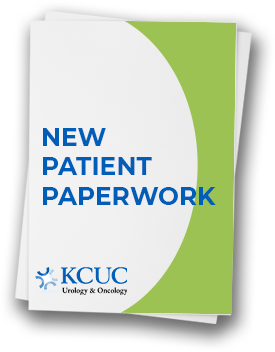MRI Ultrasound Fusion Biopsy
Aside from skin cancer, prostate cancer is the most common cancer diagnosed in men. Prostate cancer risk increases with age, with most cases occurring after age 60. According to the National Cancer Institute (NCI), around 190,000 men are diagnosed yearly, and about 1 in six men will be diagnosed sometime during their lifetime.
The procedure, technically known as MRI-TRUS (magnetic resonance imaging/transrectal ultrasound) fusion targeted prostate biopsy, requires special imaging capabilities and high-level training for both radiologists and urologists. Because it is a more accurate means to identify important or significant prostate cancer, it has been gaining popularity since around 2014.
How does it work?
After the urologist identifies a patient at risk for prostate cancer, (abnormal digital examination, high PSA reading, strong family history) he is referred for MRI imaging and mapping. Radiologists use a state-of-the-art MRI examination to identify potentially suspicious areas. If present, the MRI images are then sent to a device that blends (fuses) those images with ultrasound images used by urologists to guide a needle into the prostate, in order to take a biopsy or sample of the tissue in question. This tissue is then sent to a pathologist to determine whether it has cancer. The biopsy is generally done with sedation in an outpatient procedure center.
Is it effective?
The lesions identified in the prostate are rated 1-5 by the radiologist according to their characteristics, like size, location, and presence of vascularity or nodularity. PIRADS 1 or 2 lesions are considered benign. A PIRADS 3 has about 25% risk of cancer where PIRADS 4 or 5 lesions are 40% and 60% cancerous, respectively.
What are the risks?
There is about a 3-4% risk of urinary infection following transrectal prostate biopsy. Oral antibiotics and an injected dose at the time of procedure are a standard part of the procedure to help reduce this risk. Bleeding is common after biopsy but is generally mild and temporary. Only rarely is blood transfusion necessary. The prostate may swell some after biopsy-making urination more difficult is some men.
What can I expect after biopsy?
It is normal to have some mild achiness or soreness in the prostate area – above the pubic bone or between the legs. Two days of rest and a hot bath will help.
There may be a small amount of blood in the urine or stool for several days after biopsy. It is usually mild and temporary. There may be some brownish or maroon color in the semen for up to 4 weeks.
Any fever or chills is an emergency which requires calling the doctor’s office or go to the emergency room or both. Infection after prostate biopsy can be life-threatening.
When should I call the doctor’s office?
- Fever of 101 or shaking chills
- Heavy bleeding in the urine or stool
- Difficulty with urination
- If you do not have results in 7 days

